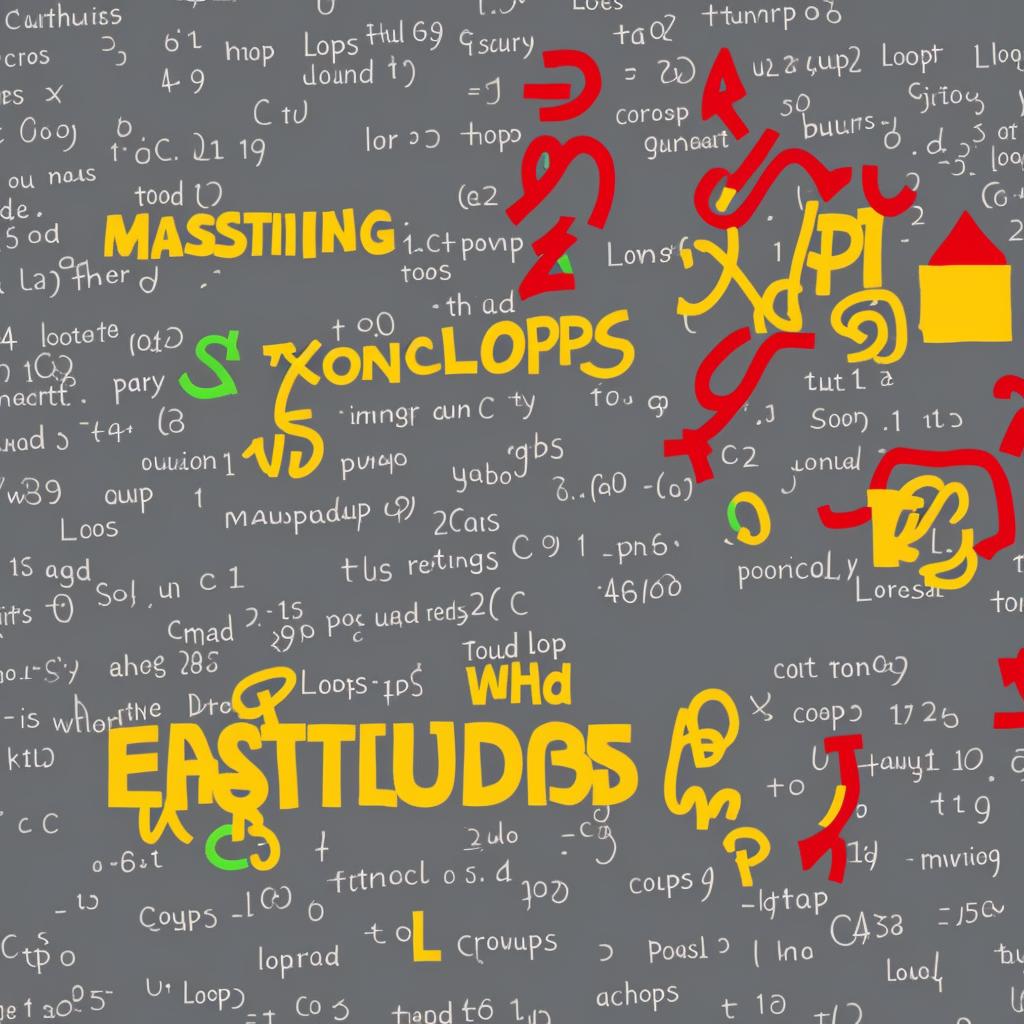Here’s a possible introduction:
“The Loop of Control: Mastering the While Loop in Python”
In the vast expanse of programming languages, there exists a structure so versatile, yet often misunderstood – the While Loop. Like a trusty compass navigating through uncharted territory, this control flow statement helps programmers traverse complex logic with ease. In Python, one of the most popular and user-friendly programming languages today, mastering the While Loop is an essential skill that can elevate your coding prowess from amateur to ace.
In this article, we’ll delve into the syntax and inner workings of the While Loop in Python. You’ll learn how to harness its power to create efficient loops that handle conditional logic with finesse. With a plethora of examples and practical use cases, you’ll be well on your way to becoming a While Loop virtuoso. Whether you’re an experienced programmer or a beginner looking to improve your skills, this article will provide the insights and inspiration needed to take your Python programming abilities to the next level.

Understanding the Fundamentals
Mastering While Loops in Python: Syntax and Examples
A while loop is one of the most versatile control structures in Python programming, allowing your code to execute a specific block of code as long as a particular condition remains true. This fundamental construct is widely used in various scenarios, such as iterating over lists, working with files, or even building game loops.
Here are some essential aspects to grasp about while loops:
-
Basic Syntax: The basic syntax for a while loop looks like this:
while:
# Code to executeReplace
-
Key Aspects: Some key aspects of while loops include:
• Initial Condition Check: Before the first iteration, Python checks if the initial condition is met.
• Loop Continuation: While the condition remains true, Python executes the code within the loop for each iteration.
• Exiting the Loop: When the condition becomes false, execution continues at the line following the while loop. -
Table of Comparison with For Loops
| For Loops | While Loops | |
|---|---|---|
| Initialization | The control variable is initialized automatically. | Manual initialization is required before entering the loop. |
| Condition Check | Each iteration begins with an automatic check of the condition. | A manual condition check occurs at the beginning of each iteration. |
| Termination | Execution terminates once the loop completes its final iteration, or when a break statement is encountered. | Execution continues until the while loop’s condition becomes false. |
Here’s how you can use these principles to implement your own code:
-
Example Usage: Here’s an example of using a while loop for iterating through the first half of numbers in a list:
def first_half(numbers):
half = len(numbers) // 2
i = 0
while i < half:
yield numbers[i]
i += 1
numbers = [3, 5, 9, 6, 7, 4, 8]
first_five = list(first_half(numbers))
print(first_five) # Output: [3, 5, 9, 6, 7]
This example uses a generator function to iterate through the first half of numbers in the provided list.
The Anatomy of a While Loop in Python
Mastering While Loops in Python: Syntax and Examples
A while loop is a control flow statement that allows you to execute a block of code repeatedly as long as the specified condition is true. This makes them incredibly useful for tasks like iterating over lists, manipulating data in files, or even simulating real-world scenarios.
Breaking Down the While Loop Syntax
The syntax for a while loop is quite straightforward:
- **while** (condition):
- # Code to execute repeatedly
But what exactly makes up that condition? Well, it’s simply an expression that can be evaluated as either True or False. Here are some examples of conditions you might use in a while loop:
- **Integer comparison**: `i < 10` (loop until the integer `i` is less than 10)
- **String manipulation**: `s.startswith(‘Hello’)` (loop until the string `s` starts with ‘Hello’)
- **Boolean value**: `True` or `False` (loop indefinitely or stop immediately, respectively)
Example Use Case: Iterating Over a List
Suppose you have a list of numbers and you want to sum them all up. You could use a while loop to iterate over the list until there are no more elements left.
| List Element | Sum |
|---|---|
| 1 | 1 |
| 2 | 3 (1 + 2) |
| 3 | 6 (3 + 1 + 2) |
| 4 | 10 (6 + 4) |
Here’s how you could implement this using a while loop:
numbers = [1, 2, 3, 4]
sum = 0
i = 0
while i < len(numbers):
sum += numbers[i]
i += 1
print(sum)In this example, the while loop iterates over the numbers list and adds each element to the running total until all elements have been processed. The final output would be 10.

Mastering Conditional Statements with While Loops
Mastering While Loops in Python: Syntax and Examples
While loops are a fundamental control structure in Python programming, allowing your code to execute specific blocks of code repeatedly until a certain condition is met. To master while loops in Python, it’s essential to understand their syntax and how they can be used effectively.
Understanding the While Loop Syntax
While loops in Python follow a straightforward syntax: while
| Code | Description | |
|---|---|---|
| 1 | while condition: |
Define the condition for the loop to continue |
| 2 | code_to_execute |
Indented block of code to be executed until the condition becomes false |
Example Use Cases
• Counting: A simple while loop can be used to count from a specified number down to zero.
- Example:
i = 10; while i > 0: print(i); i -= 1
Using While Loops Effectively
While loops are versatile and can be applied in various scenarios. However, they should be used judiciously because they can lead to infinite loops if not monitored properly.
To use while loops effectively:
• Establish a clear condition: Ensure that the condition for the loop is clear and will eventually become false.
• Monitor the loop progress: Periodically check the progress of your loop to avoid infinite loops.
• Consider alternatives: If possible, consider using other control structures like for loops or recursion to achieve your desired outcome.

When to Use a For Loop Over a While Loop and Vice Versa
While Loops are often misunderstood as being exclusively suited for tasks that require continuous execution until a specific condition is met. However, this isn’t always the case. There are scenarios where a For Loop would be more efficient than a While Loop.
Example Scenarios:
- When you know the exact number of iterations beforehand (e.g., printing numbers from 1 to 10):
-
Code Description for i in range(11):Prints numbers from 1 to 10.
-
- When dealing with a sequence of elements (e.g., iterating over a list):
-
Code Description for item in my_list:Iterates over each element in the list.
-
In these cases, using a For Loop simplifies the code and reduces the need to explicitly update loop variables.
When to Use a While Loop:
A While Loop is ideal for scenarios where you don’t know the number of iterations beforehand or when dealing with user input.
Closing Remarks
And so, our journey through the wonderful world of while loops has come to a close. We’ve explored the syntax that makes them tick, and put them to the test with a series of practical examples. From the simplest tasks to more complex scenarios, we’ve seen how while loops can be harnessed to write efficient, effective code in Python.
As you continue on your programming path, remember that mastering while loops is just one brick in the foundation of Python mastery. With this newfound knowledge, you’ll be well-equipped to tackle a wide range of problems and challenges. So, take what we’ve learned here today, and go forth with confidence – knowing that you’re not just writing code, but creating solutions that can change lives.
Until next time… happy coding!
